Don’t Fence me in: Protecting the Migration Corridors of Wyoming’s Wildlife
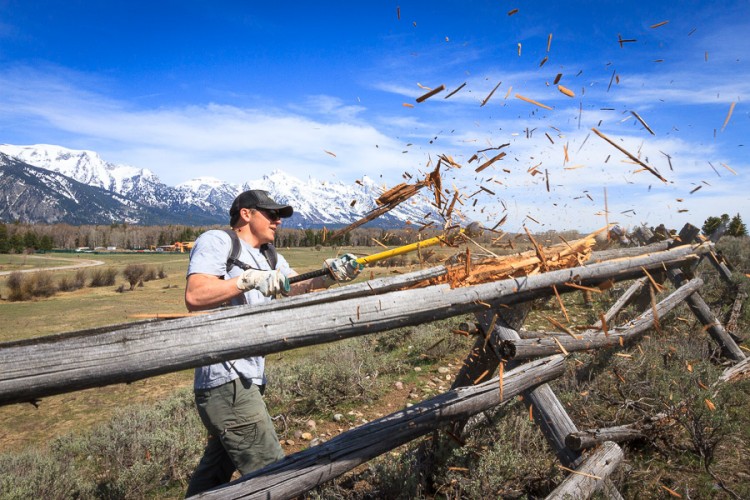

Look! There’s a herd in the pasture over there!
I point out a herd of elk to my group of students and their parents from Grace Episcopal School in Monroe, Louisiana. Unlike a normal EcoTour of Grand Teton or Yellowstone National Parks, we’re on private land in the Snake River Bottom. It’s day three of our tour, and today we’re working with the Jackson Hole Land Trust and the Jackson Hole Wildlife Foundation to remove fencing which has been impeding the movements of the very herd of elk we’re now looking at.
It’s our third year of fence removal stewardship with Grace and the JHWF. The first year we busted buckrail in an elk calving area within Grand Teton National Park. The next year we coiled old barbed wire on public land south of Jackson, watching later as a mule deer doe walked through our handiwork. But this year we’re doing something different, working with the JHLT, JHWF, and private landowners to help steward core riverbottom habitat. It’s an area we would not otherwise be allowed to venture, but our benefactors, the elk, know nothing of property rights.
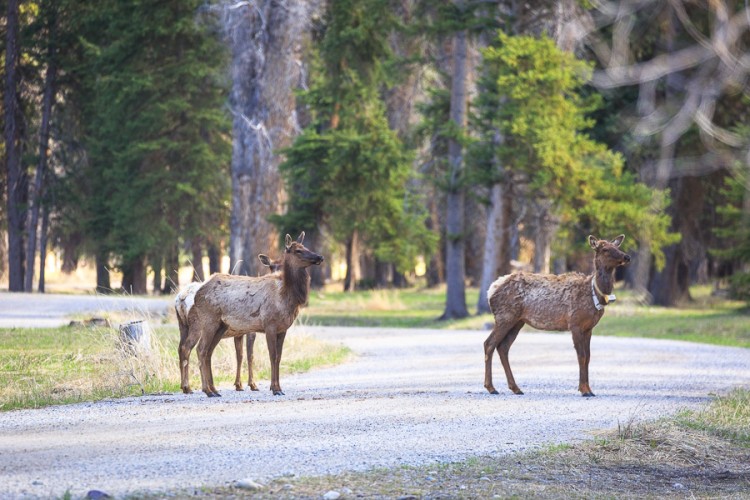
Saving Wyoming’s Great Migrations
Despite this week’s spring snowstorms, the green wave is now racing across the Wyoming landscape. Fresh grasses and flowers are bursting from the moist soils, to the delight of our elk, mule deer, pronghorn antelope and other ungulate herds. These species all share a key adaptation in common, they migrate to survive the harsh Wyoming Landscape.
These migrations, many of which are thousands of years old, take herds across busy highways, where they risk collisions with speeding cars. They cross property boundaries, jumping over barbed wire or buckrail fences, some are injured or even killed in the process.
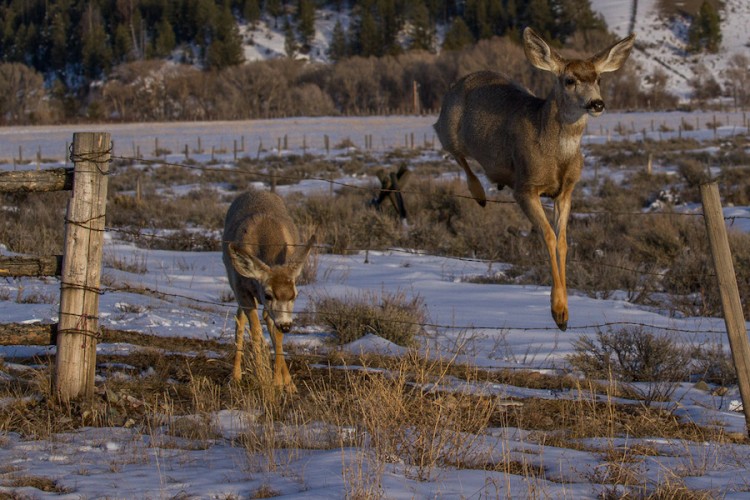
Why go through all the trouble? Research with GPS collars has shown that migrating animals are able to stay with spring longer, taking advantage of the most fertile period of plant growth for an extended period. This strategy only works however, if the habitat remains protected and the animals can effectively travel their migration routes.
Stewardship in Action with the JH Wildlife Foundation and JH Land Trust
Look across the Jackson Hole valley and much of what you see is now protected public land. With the creation of the National Elk Refuge in 1912, and expansion of Grand Teton National Park in 1950, ancient migration routes, were protected, but hundreds of miles of fencing from old ranching operations remained.
Over the last 20 years the Jackson Hole Wildlife Foundation and an army of volunteers have worked to remove or modify this fencing, rewilding the National Park. The remaining lands, about 3% of Teton County, are private, and lay primarily along the riparian corridor of the Snake River. The cottonwood galleries, creeks, ponds, and spruce/fir forests found here offer disproportionately rich habitat for wildlife. As such they are of critical conservation concern.
That’s why the Jackson Hole Land Trust has worked with landowners to conserve over 55,000 acres of private lands using conservation easements, which preserve the conservation values of the land in perpetuity. The parcel we’re at on this sunny Mother’s Day weekend is one such easement, an agreement patiently brokered by the JHLT and three separate landowners.
Don’t Fence Me In: Boots on the Ground Conservation
After a quick orientation from Erica at the JHLT, Gretchen Plender and Jon Mobeck of the JHWF, we set off to remove old buckrail fence at the top of a ridgeline which overlooks the river corridor. The weathered fencing already has some gaps, and Jon shows us the packed dirt trails of hundreds of elk who have passed through these limited openings.
“We’re going to create more openings by removing this old fence so the herds can move more freely.” he tells us. With mini sledge hammers and fencing tools the students, recent 8th grade graduates, tear into the fencing. Post by post quickly drop as the mile long section begins to vanish into the sagebrush.
Studies show that in the Western U.S. one ungulate per year dies from entanglement in fencing for every two miles. Young calves who become separated from their mothers by fencing can double this statistic. With the fencing in this section removed elk migrating to the river from winter habitat on the National Elk Refuge now have a clean route through a historically challenging corridor.
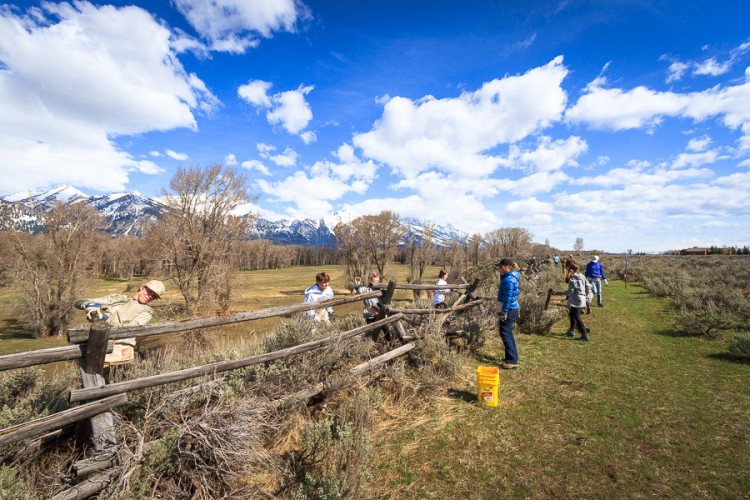
We finish for the day having removed over half of the section, the rest of the EcoTour Adventures team will return tomorrow, Mothers Day, to complete the job. It’s a fitting time to do fence work for wildlife. We pass a herd of cow elk beneath the cottonwoods as we depart, most of which are likely pregnant. In a few weeks these forests will become a nursery for hundreds of newborn calves. They will quickly grow through the summer months, and when the first snows come in the fall the calves will follow their mothers out of the river bottom. They will pass by remnants of fencing, unaware of what formerly stood in their path.
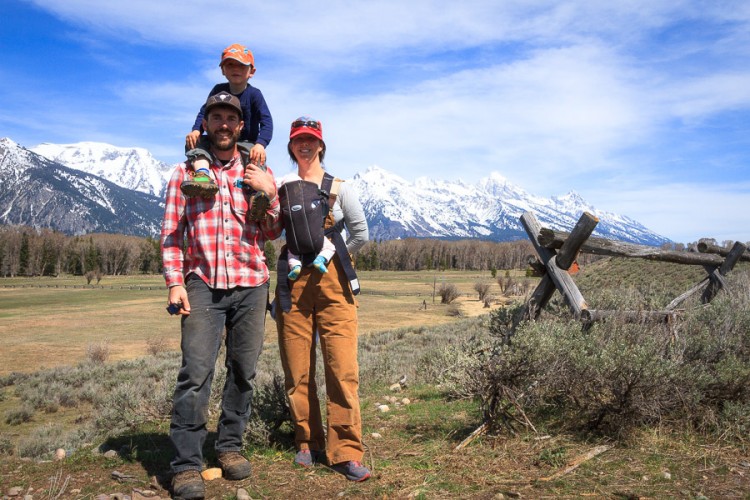
What you can do to Conserve Wyoming’s Wildlife
Want to help wildlife in Jackson Hole and across Wyoming this summer? We’ve got a few ideas for you:
Public Fence Pull Projects with the JHWF: Join the Jackson Hole Wildlife Foundation for boots on the ground conservation removing or modifying fencing to facilitate wildlife passage. Dates are listed here: https://jhwildlife.org/our-work/current-projects/
Contact: kyle@jhwildlife.org
Buy a Wildlife Conservation License Plate: Wyoming Residents! We invite you to join Jackson Hole EcoTour Adventures and many of our guides in purchasing a Wildlife Conservation License Plate. Proceeds from these plates directly fund wildlife crossings and other mitigation strategies to reduce car collisions with wildlife. It’s a win win for wildlife and people. http://www.dot.state.wy.us/wildlife_plate
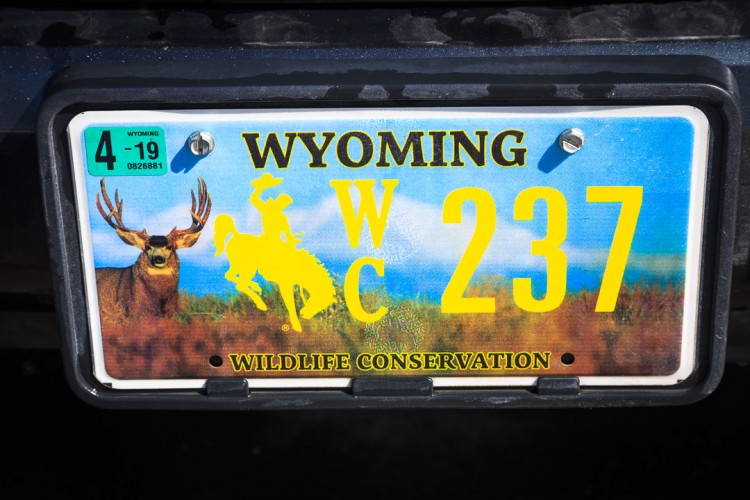
Now in our 11th year of operation, Jackson Hole Ecotour Adventures leads half day, full day, and multi day wildlife, cross country ski, and snowshoe tours in Grand Teton and Yellowstone National Parks 365 days a year. Let us help maximize your Jackson Hole Experience Today! 307-690-9533 or info@jhecotouradventures.com
Josh Metten is a Senior Naturalist with Jackson Hole EcoTour Adventures with nearly a decade of experience guiding and sharing stories about the Greater Yellowstone Ecosystem.













